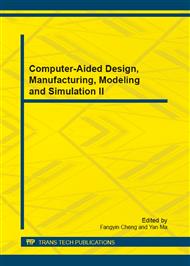p.3
p.7
p.12
p.17
p.22
p.28
p.33
p.37
Optimization Analysis of Exhaust Muffler for a Hybrid Car by GT-Power
Abstract:
Both the attenuation performance and the aerodynamic performance should be carefully considered in the muffler design of automobiles. Aim to improve the exhaust-muffler properties of a hybrid car, a design work has been done and introduced in the paper. Firstly, the volume analysis method was utilized to give a rough estimation. Then, the GT-Power software was employed to construct the coupled simulation models of the process of acoustic performance and engine running, by which the insertion loss analysis and the exhaust back pressure difference analysis were completed. By combined the simulation with the experiment analysis, the acoustics performance and air dynamic characteristics of each model was obtained, and it provides the theoretical fundament for the improved design.
Info:
Periodical:
Pages:
17-21
Citation:
Online since:
December 2012
Authors:
Keywords:
Price:
Сopyright:
© 2013 Trans Tech Publications Ltd. All Rights Reserved
Share:
Citation:


